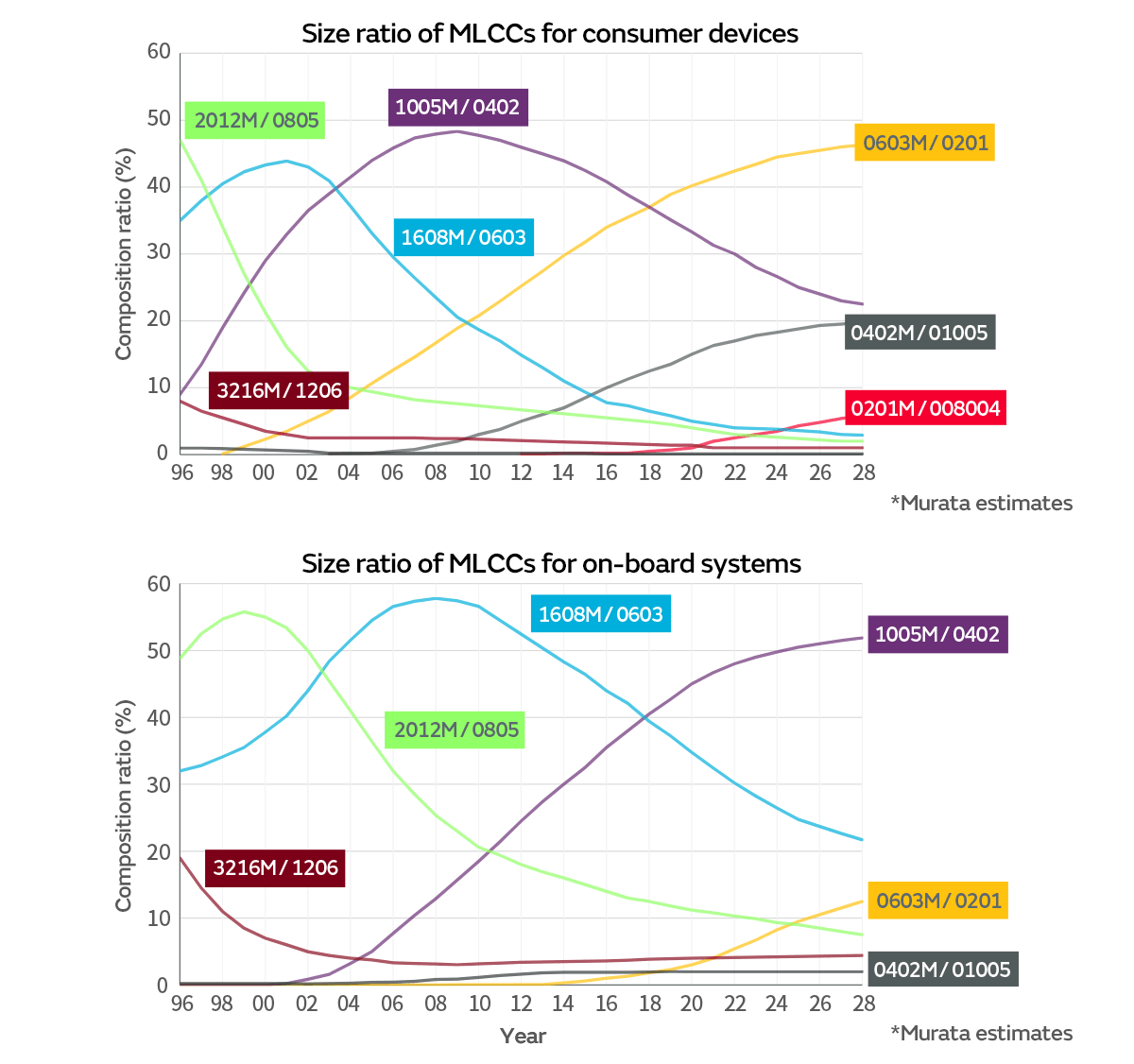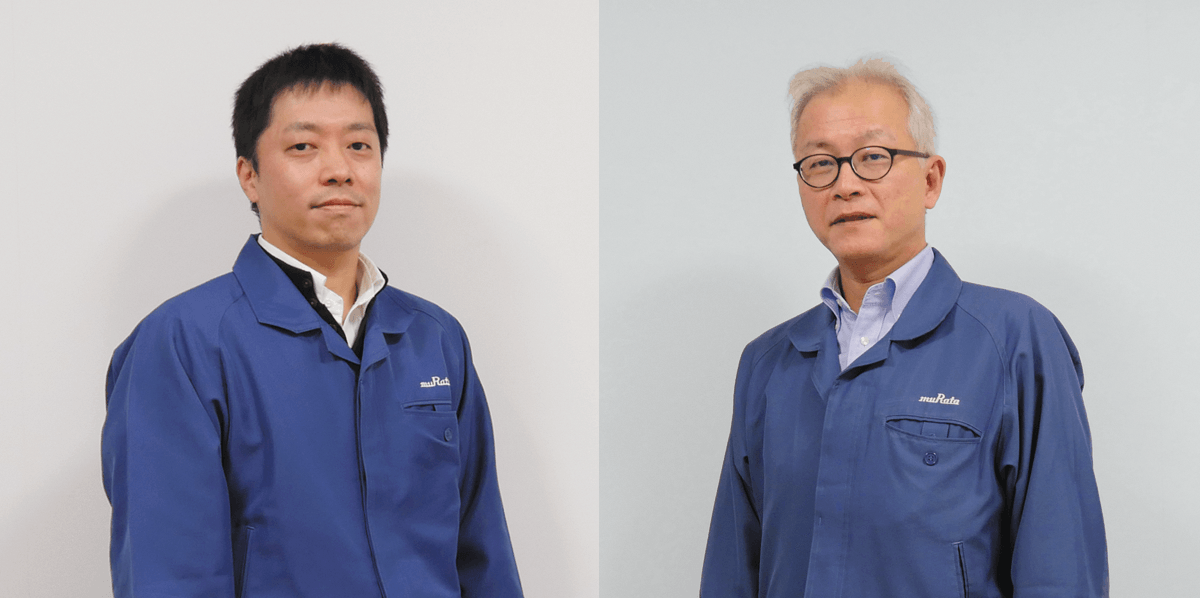NFM15HC105D0G3#


In Part 2 of our three-part series, we presented the technologies and production system that support the strengths of the automotive multilayer ceramic capacitors (MLCCs) offered by Murata Manufacturing , a global leader in technology development with a market share of 50%. In addition, we also heard more about the direction of automotive MLCC development due to the progress of the Connected (C) and Autonomous (A) features that are part of the four elements that make up the CASE trend. In Part 3 of our series, we will learn about the direction of development associated with the remaining two elements consisting of Shared and Services (S) and Electric (E), as well as the measures implemented when conducting advanced development of technologies and products in anticipation of needs amid changing automobile industry supply chains.
--Next, would you tell us how you view the changing needs with respect to MLCCs in relation to the Shared and Services aspects, which constitute the “S” in the CASE acronym.
Expectations are growing within the automobile industry concerning the realization of sharing services, which utilize self-driving cars operating at Level 4 and above. In such an application, the previously expected operating time of four hours per day for the typical car may be extended up to a maximum of 24 hours. This can be described as harsh usage conditions. We believe that MLCCs with an even higher level of reliability will be required under such conditions.
However, we have still not yet received any specific requirements from customers at the current time. Because this point will become an important movement in thinking about product development and production, I would like to pay close attention to this trend.
--Do the MLCC devices themselves need to be newly developed for cars that continuously operate for long periods of time?
There is a possibility that our approach to the design itself will implement a more conservative design than at present to increase quality. If the discussion shifts to increasing quality while achieving a compact size and high capacitance, the degree of technical difficulty will increase due to the requirement to introduce new technologies.
It is thought that support for changing quality and reliability requirements is the same for not only MLCCs but also semiconductors and mechanical components. I think that it is important to consider how the trends in technology required by cars in anticipation of sharing will unfold across the entire automobile industry and respond while maintaining consistency with the evolutionary vector of each part.
--Next, what kinds of changing needs do you anticipate under electrification, which represents the “E” in the CASE acronym? It is believed that with the adoption of hybrid vehicles (HEV), a fairly clear logic has become evident.
Under electrification, various methods such as HEVs, electric automobiles (BEV), and fuel-cell electric vehicles (FCEV) are concurrently advancing, but it is believed that electrification will ultimately consolidate around BEVs. The immediate issue at that time will be extending the cruising distance. High-capacitance batteries must be equipped to increase the cruising distance, but simply increasing the capacitance will lengthen the charging time and result in a car with poor usability. Therefore, the question of how to charge high-capacitance batteries in a short time will become an issue in the technology development.
At the current time, increasing the battery voltage is attracting attention as a possible solution (Figure 1). Current voltages are typically between 400 to 500 V, but a movement to raise that to 800 V or more is emerging. There are already implementation examples of 800 V batteries in some luxury vehicles. Based on the trend toward higher voltages, a requirement to increase the withstanding voltage of MLCCs while maintaining a high level of quality is surfacing.

--Does the support for 800 V represent unexplored territory?
At Murata, we are currently able to release products to market with up to a 1 kV withstanding voltage and on-board quality. Even under the current circumstances, such products are usable depending on the way in which they are used, but the voltage margin must be further increased in order to increase the safety and reliability. In fact, some customers are requesting support for voltages between 1.5 kV and 2 kV. Supporting such demands is an issue.
--Mild hybrid vehicles with a 48 V power supply are being adopted mainly in Europe. Will new technology needs emerge when supporting this trend?
We believe that 48 V vehicles can be sufficiently supported with the miniature, high capacitance products that we already possess, which provide the world’s most advanced withstanding voltage of 100 V. However, because some customers wish to reduce the number of components used, we will promote a shift to high capacitance to meet that requirement.
--The shift toward Ethernet-based on-board networks and other updates to the E/E architecture*1 are advancing as a concomitant change within the CASE trend. Will there be any changes in MLCC needs in accordance with that change?
Even if the E/E architecture changes, I do not think that the MLCC requirements will change. I think that inductor related passive components such as common mode choke coils*2 used in noise suppression will be significantly affected by this change with the increasing degree of technical difficulty due to network acceleration.
*1 E/E architecture is a design philosophy used when determining where to arrange the various functions that make up the on-board system within the on-board network. E/E is an abbreviation of Electrical/Electronic. Until now, ECUs (control computer: Electronic Control Units) were connected to each electrical component that they controlled, and the ECUs were connected to each other through the on-board network. Going forward, it is expected that “domain architecture” will be adopted, which organizes the processing targets by application such as control-related, body-related, and infotainment-related domains and arranges the ECUs in the appropriate location. Finally, many automobile manufacturers are considering a future transition to a configuration called a “zone architecture,” which centrally positions a high-performance computer to consolidate the distributed ECU processing capacity.
*2: A common mode choke coil is a coil filter that removes problematic common mode noise in differential transmissions, balanced transmissions, power supplies, and audio lines without affecting the signals.
If I had to highlight a change to MLCCs, the number of equipped applications may increase due to the diversification of the on-board network, and the amount of MLCCs used may increase. Moreover, if the “zone architecture,” which is centrally equipped with a high-performance computer that integrates the distributed control processing, is adopted as the final configuration of the E/E architecture, there will be an emerging need for MLCCs in power supplies that handle a large amount of power as discussed in the changing needs due to automation. However, regarding the adoption of the zone architecture, currently each of the automobile manufacturers has a different viewpoint, so we would like to closely observe this trend going forward. We believe that the MLCCs expected to be equipped in self-driving cars can sufficiently support the “domain architecture” adopted for new model vehicles undergoing development at the current time.
--Going forward, what types of technology development will you promote in automotive MLCCs in preparation for further advancements of the CASE trend?
We will evolve automotive MLCCs in anticipation of supporting on-board needs based on technologies used in consumer devices that lead in terms of miniaturization and high capacitance. Our goal is to create automotive-grade products that have the same size and capacitance while being about 5 to 10 years behind consumer devices (Figure 2). The development of low-ESL and thin products for package mounting will also be promoted while maintaining reliability. However, while there are many low-voltage products for consumer devices, there is also significant demand for on-board products with medium and high voltage. On this point, we believe that we must prioritize the independent development of high withstanding voltage technologies for on-board use.

As discussed previously, this type of technology development and product development is advanced by drawing a roadmap while understanding the needs of customers. However, in recent years the automobile supply chain, or to put it another way, the customers who determine the direction of automobile technology development are changing, and the future that we must closely observe in order to understand their needs has become more complex.
Until now, the business group suppliers were mostly determined according to each OEM. However, in some cases the OEMs themselves engage in system design rather than outsource the work to Tier 1 suppliers. It has become important to carefully ascertain who is determining the specifications of future on-board systems and reconcile those needs with Murata’s technology development at an early stage. In addition, it is also essential to keep an eye on trends at IC manufacturers who are proposing technologies to OEMs and Tier 1 suppliers.
--I see. So, the tactics tailored to the changing times are being called into question within the examination of needs as well.
At Murata, we have established an application development unit in the Yokohama office, which develops and proposes new MLCC applications to customers who are building on-board systems. At this unit, we provide evaluations and proposals to optimize client substrate designs as well as contract services to evaluate EMI noise. That being said, it is not the case that Murata can perform evaluations of each characteristic of the on-board systems that customers are developing. Murata evaluates systems in the prototyping stage while making adjustments with the customer’s designers to solve technology issues, reduce the number of components used, and propose solutions to achieve even higher efficiencies.
In 2021, we established an innovation center in Minato Mirai, Yokohama, installed an entire car, and plan to set up a site that can measure EMI and communication noise. Going forward, we would like to put more effort into activities to increase such points of contact with customers.
Certainly, there are currently few competitors entering the market for automotive MLCCs, but if electrification and automated driving advance, competition may emerge from Chinese companies and startup ventures, etc. and gain strength. We would also like to steadily aim for higher reliability.
We will evolve automotive MLCCs in anticipation of supporting on-board needs based on technologies for consumer devices that lead in terms of miniaturization and high capacitance. Fundamentally, we will further increase the miniaturization and high capacitance, high withstanding voltage and thin shape, low ESL, and other characteristics while maintaining reliability.
Meanwhile, as the supply chain becomes more complex, past customers will change, and the design points are changing to the OEMs. Therefore, we believe that clarifying the supply chain to ascertain the customers within the supply chain (particularly design customers) including the OEMs to appropriately identify VOCs and make adjustments from the design stage will likely be important for the timely market release of new products.
Murata’s MLCCs are supporting a once-in-a-century revolution in the automobile industry from the shadows as an essential supporting actor. The technical requirements being demanded are extremely high, and a massive volume of products are being used inside cars. Cutting-edge automotive MLCCs are produced through integrated manufacturing from materials to final products that can be described as components that can be created by Murata for the very reason that the company has the ability to propose the appropriate solutions in a timely manner based on the CASE trend. Going forward, MLCCs will likely continue to steadily evolve in close proximity to the evolution of on-board systems and on-board semiconductors.
The application of automotive MLCCs that combine high quality and reliability with miniaturization and high capacitance may expand to non-automotive fields as well in the future. Many companies are now tackling the challenge of developing robots that can coexist with people as they attempt to develop new markets. Moreover, development is also advancing that applies automation, electrification, and conductivity technologies cultivated in automobiles to miniature farm and construction equipment that can handle work without human intervention, industrial drones, and miniature mobility systems used for package and food delivery. At the current time, automotive MLCCs have already created a huge market, but they appear poised to take on an even greater role in the near future. The evolution and expanding applications of Murata’s automotive MLCCs requires further observation.

The information presented in this article was current as of the date of publication. Please note that it may differ from the latest information.


